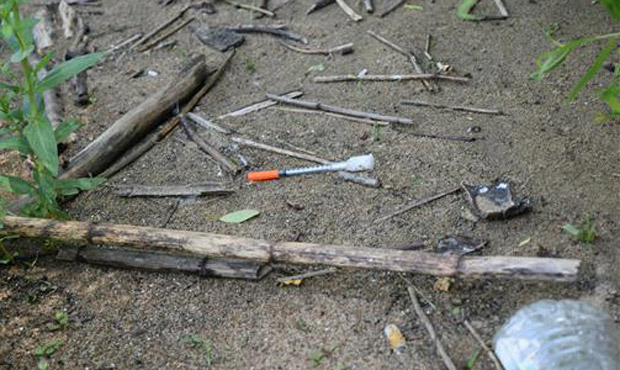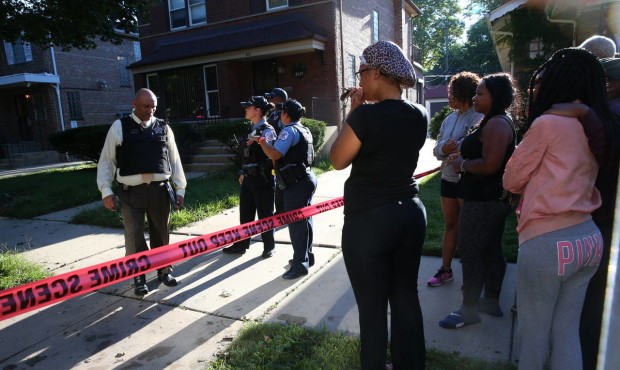Tom and Curley
Why Seattle’s homeless solutions are missing the point
 The Doe Fund in New York City provides transitional jobs and training options to the homeless, rather than build encampments. (Josh Kerns, KIRO Radio)
The Doe Fund in New York City provides transitional jobs and training options to the homeless, rather than build encampments. (Josh Kerns, KIRO Radio)
Forget encampments, tiny homes, RVs or tossing in more money. Alexander Horwitz, Director of External Affairs for the Doe Fund in New York City, told KIRO Radio’s “Tom and Curley” that Seattle could be more successful fighting homelessness through a different route: Give them jobs.
“Build transitional facilities, commit to funding them and bring these people out of the shadows,” he said. “Putting them into small, tiny homes, putting them into warehouse style environments out of the way — it’s out of sight, out of mind. It may temporarily improve the quality of life in the city itself but it will be detrimental … to the people, to the community in the long term. Invest in these lives.”
Related: Seattle police face constant rejection in efforts to help homeless
The Doe Fund is a nonprofit that started in 1985 with the motto of providing the homeless with “a hand up, not a handout,” providing a transitional work program and housing, that includes a phased approach that begins with job training and finding homeless individuals lasting careers.
Horwitz says addressing the “underpinnings,” or real causes of homelessness, is more important than the window-dressing that is often done.
“It’s real popular right now to look at this national crisis of homelessness and say all these people don’t have homes, we need to come up with homes for them,” he said. “If they’re homeless, you give them a home, and that makes sense on its surface. But when you really look — when you know the people, when you talk to them, when you understand how they arrived at homelessness — you understand it has a much more complex picture that has economic underpinnings.”
Horwitz says the first step is to give people the opportunity to go to work, earn money, and support themselves and their families.
“The power of work and economic opportunity in this country is unbelievable and it can turn lives around,” he said. “We do it every day of the year here in New York City.”
Horwitz says it’s key to address the direct correlation between incarceration and homelessness/poverty, where the roots converge at the lack of economic opportunity. Give these people a chance to support themselves and they will rise to the opportunity, he said.
The Doe Fund avoids warehousing people, shutting them into shelters — “and crossing our fingers and hoping for the best” — and public encampments that can become targets for violence.
“When (encampments) have to be broken up, then you’ve compounded the problem because you’ve got homeless people who now have criminal records, making it even more difficult for them to become ‘unhomeless,'” he said. “The most important thing we can do, whether it’s Seattle, Chicago or New York City, is to provide people the opportunity to go to work. It’s a miraculous thing.”
Tom Tangney says that, on its surface, the idea sounds great, but wonders what kinds of jobs are available for these people and how successful they are in those positions. Also, what happens to those who can’t do the jobs?
The Doe Funds’ Ready, Willing & Able, nine- to 12-month transitional work program starts with street cleaning, where everyone is paid at least minimum wage.
“It’s not glamorous work,” he said. “It’s difficult, it’s hot in the summer and it’s cold in the winter. But that’s something everybody can do. They can push a bucket, they can push a broom and they can improve the community.”
Horwitz adds that the work also helps reintegrate people into the idea of contributing to the community, rather than taking from it or impacting it negatively, and, most importantly, teaches the soft skills of employment.
“If you’ve been on the streets doing drugs for 20 years, or if you’ve been in prison locked up for 20 years, you are going to have serious deficits … rendering you unemployable in the market,” he said. “The opportunity we provide tries to repair that damage and we do a very, very good job of it.”
After three months in the program, people graduate into one of six career training tracks that have professional licenses attached to them.
“We don’t want everybody to grow up and be a street cleaner, of course. There isn’t a lot of mobility there,” he said. “…These courses, these tracks, if you commit to them, represent a lifetime of potential income for the men in our program and their families.”
As for funding, Horwitz says the work earns a substantial amount of revenue that supports the program, plus they fundraise and partner with the city and state. He adds that every dollar that comes into the program saves the city $3.60.
“Our street cleaning operation has to compete on the open market just like any private sector company and we win contracts with city council members, with business improvement districts and individual businesses who want our services and believe in our mission,” he said.
Horwitz says the underlying lesson from the organization is that every person you see lying on the street could be contributing to society if given an opportunity.
“If you give them the opportunity to get clean and sober, give them the opportunity to go to work, to learn a professional trade, to get that license, there’s an enormous amount of potential in every single one of those lives,” he said. “So the first step is to commit to investing in those lives. You invest in them by building the facilities, by funding the programs and by getting nonprofit providers together into this community to really lift these lives up.”








































Comments